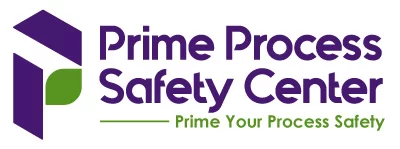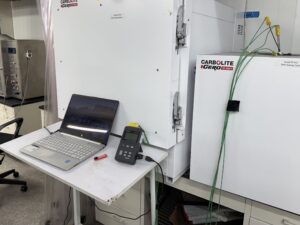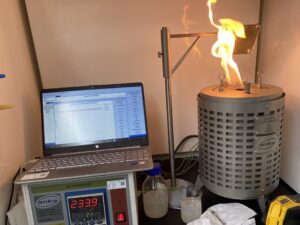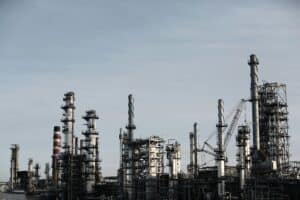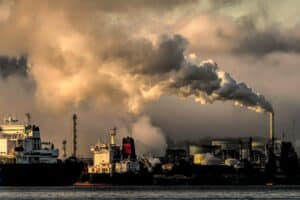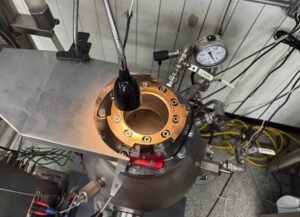We also offer
What Is Consequence Modeling?
Consequence Modeling is a key element of industrial risk assessment that focuses on predicting the potential impacts of hazardous events. It simulates the effects of incidents like chemical spills, gas leaks, fires, and explosions to understand their consequences for people, property, and the environment.
This modeling technique uses mathematical simulations and specialized software to estimate outcomes such as:
-
The dispersion of toxic gases
-
Blast overpressures from explosions
-
Thermal radiation from fires
-
Environmental contamination from chemical releases
Industries that handle hazardous materials—such as chemicals, oil and gas, and manufacturing—rely on consequence modeling for safety planning, facility design, and regulatory compliance.
Why Is Consequence Modeling Important?
Consequence modeling helps industries proactively manage risk by:
-
Predicting event outcomes before they occur
-
Supporting emergency response planning and mitigation strategies
-
Evaluating existing safety systems and identifying gaps
-
Informing design decisions like facility layout and protective barriers
-
Enhancing regulatory compliance with OSHA, EPA, and other standards
-
Protecting communities and the environment from industrial hazards
By using scientifically validated models, companies can make data-driven decisions that improve safety, reduce risk, and demonstrate due diligence.
How Is Consequence Modeling Conducted?
Implementing consequence modeling involves a step-by-step approach:
-
Scenario Identification
Identify credible hazard scenarios, such as gas releases, fires, or explosions. -
Data Collection
Gather material properties, process conditions, and site-specific details. -
Model Selection
Choose appropriate models—e.g., dispersion, explosion, fire radiation, or toxicity models. -
Parameter Definition
Input conditions such as weather, terrain, release quantity, and temperature. -
Simulation Execution
Run simulations using modeling tools (e.g., PHAST, ALOHA, or FLACS) to assess impact areas. -
Impact Assessment
Analyze results like toxic plume radius, overpressure zones, and thermal radiation extent. -
Evaluate Safety Measures
Determine the effectiveness of current safety systems and identify improvement areas. -
Emergency Response Planning
Use findings to refine evacuation plans, firefighting strategies, and response protocols. -
Compliance Check
Ensure modeling aligns with industry regulations and safety standards. -
Documentation & Reporting
Maintain clear records for audits, stakeholder communication, and future reference. -
Review & Update
Regularly update models based on process changes, new data, or updated regulations. -
Training & Awareness
Educate staff on scenario outcomes, safety procedures, and risk awareness.
Why Perform Consequence Modeling?
Performing consequence modeling is essential for:
-
Understanding worst-case scenarios and planning for them
-
Improving facility design and operational safety measures
-
Enhancing community and employee safety
-
Supporting process safety management (PSM) programs
-
Meeting environmental and safety compliance requirements
-
Reducing the likelihood and severity of catastrophic events
Why Choose Prime Process Safety Center
We bring deep expertise in Consequence Modeling to help you assess and manage the risks of chemical spills, fires, explosions, and other hazardous events. Here’s what sets us apart:
-
Specialized Knowledge: Extensive experience in hazard identification and analysis tailored to the process industry.
-
Advanced Tools: Use of leading-edge modeling software to simulate real-world consequences with precision.
-
Customized Solutions: Models built around your specific operations and risk profile.
-
Thorough Risk Evaluation: Comprehensive assessments across multiple failure scenarios.
-
Data-Driven Results: Quantitative insights to guide safety decisions and planning.
-
Regulatory Alignment: Support for meeting OSHA, EPA, and other industry requirements.
-
Actionable Insights: Clear, easy-to-understand results to inform emergency planning and stakeholder communication.
-
Ongoing Support: Continued assistance to apply findings effectively.
-
Training Available: Optional sessions to help your team better understand and respond to hazard scenarios.
FAQ
1. What is Consequence Modeling?
Consequence Modeling is a method used in the process industry to predict the effects of potential hazardous events, like chemical spills, explosions, or fires, on people, property, and the environment.
2. Why is Consequence Modeling important in the process industry?
It's important for understanding the potential impacts of hazardous events, aiding in risk assessment, emergency planning, and ensuring the safety of personnel and the surrounding community.
3. What types of hazards can be analyzed through Consequence Modeling?
Consequence Modeling can analyze various hazards, including toxic gas releases, flammable gas cloud explosions, fires, and chemical spills.
4. How does Consequence Modeling contribute to safety?
It helps identify and quantify the potential impacts of hazardous events, enabling the development of effective safety measures and emergency response strategies.
5. What are the key steps in Consequence Modeling?
Key steps include identifying potential hazardous scenarios, selecting appropriate models, setting parameters, running simulations, and analyzing results.
6. Can Consequence Modeling predict the exact outcome of an incident?
While it can't predict exact outcomes, it provides valuable estimations of potential impacts, helping in proactive safety planning and risk mitigation.
7. What tools are used in Consequence Modeling?
Various software tools and mathematical models are used, depending on the nature of the hazards and the complexity of the scenarios.
8. Who should be involved in Consequence Modeling?
A multidisciplinary team including safety engineers, process engineers, and environmental specialists should be involved for comprehensive analysis.
9. How is Consequence Modeling used in emergency response planning?
It provides data on potential impact areas and severity, aiding in developing targeted evacuation plans and emergency response strategies.
10. What are the challenges in Consequence Modeling?
Challenges include ensuring accurate data input, selecting appropriate models, and interpreting results in the context of complex industrial processes.

